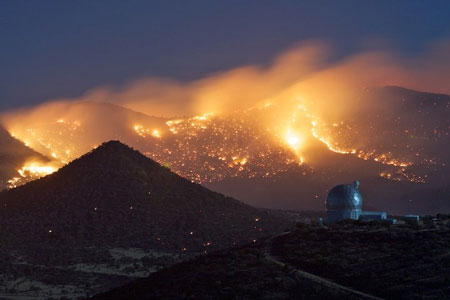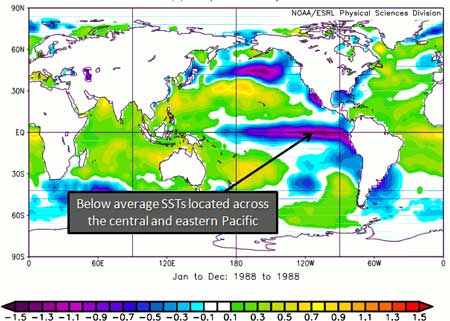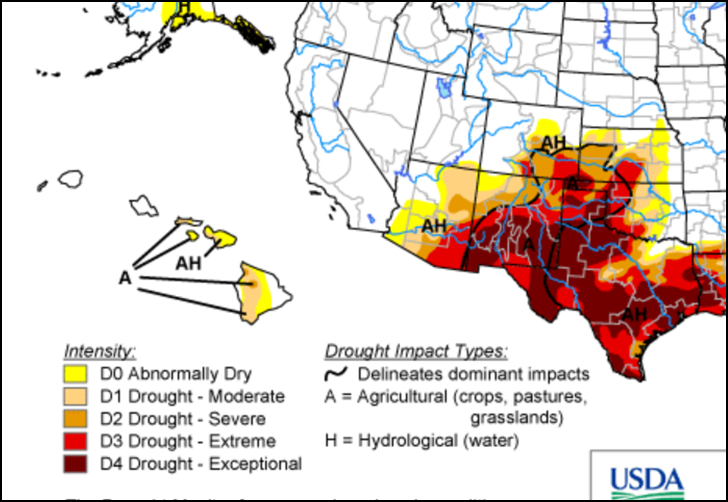Summer 2011 Brings New Chapters and Scorched Pages in the Texas Winegrowers Handbook
Earlier this year the news from Texas was dominated by one word….Wildfire!
Firefighters battled out-of-control wildfires that scorched hundreds of square miles across the state. In April, one West Texas blaze narrowly missed the historic frontier Army cavalry fort (home of the Buffalo Soldiers) and one of the world’s leading astronomical research facilities. More amazing photos at:
http://www.mylifeoutdoors.com/2011/04/fort-davis-fire-photos-secial-week-in.html
Unfortunately, these wildfires of 2011 added a new chapter to the Texas winegrowing manual called “Watch Out for Fire!” This is the same manual that I’ve admitted before “is still being written and still has wet ink on its pages”. Well, now it’s got a few scorched pages, too. The Fort Davis fire may have missed the old cavalry fort and the observatory, but it made a direct hit on the old “Watson Vineyard” that’s only about a mile southeast of Fort Davis. In recent years, this vineyard was run by Bob Cottle owner and winemaker at Pleasant Hill Winery in Brenham, Texas. It was the source of grapes for his wines made from Sauvignon Blanc, Merlot and Cabernet Sauvignon.
Luckily, Bob keeps the vineyard mowed, so the fire moved through the vineyard quickly. Some vines were lost, but most seem to be OK, and those that were burned may still have viable roots and will come back, but only time will tell. This year’s crop may be sacrificed to Mother Nature.
Ancillary damage included melted drip irrigation and burned fencing, but the old trailer Bob uses in the vineyard (called “Chateau Trailer”) that needed replacing, survived just fine. Go figure!
While the fire hazards seem to have move westward into New Mexico and Arizona, this year’s hot dry conditions still persist. The talk in Texas winegrower’s circles has moved on to the supply of that all too precious commodity…Water. This has also required a new Chapter in the Texas winegrowers manual called “Drought: It’s Not Over Till It’s Over”.
Hot dry conditions usually do not affect vineyard operations due to the use of modern drip irrigation. In fact, winegrowers are one group of farmer that usually doesn’t complain about the heat and drought since it generally leads to enhanced ripening and concentration of flavors in the grapes. However, the drought has been so intense and extended in duration during the past 12 months that many Texas vineyards are reporting low water levels and reduced output from irrigation wells. This has been the current experience with both new and old wells.
This hot dry Texas weather appears to be at least in part been brought on by the strong influence of the La Nina conditions in the Pacific that started in mid-2010. La Nina is characterized by lower than normal pressure over Indonesia and northern Australia and higher than normal pressure over the eastern tropical Pacific along. As a result of this condition, the resultant cold Pacific surface waters in the central equatorial region, it gives rise to reduced cloudiness and rainfall and higher than normal temperatures in our distant part of the world.
Is there any good news to report on the La Nina-imposed drought in Texas? Well, maybe.
According to the EL NIÑO/SOUTHERN OSCILLATION (ENSO) DIAGNOSTIC DISCUSSION issued by CLIMATE PREDICTION CENTER/NCEP on June 9, 2011, there has been a continued transition from La Niña to more neutral conditions during May 2011. This was indicated by generally moderating Pacific surface sea water temperatures. This could be good news of sorts. The data may be showing that the La Niña pattern of weather that we have been experiencing for the past year may be weakening and starting its reversion back to the wetter and more moderately temperatures that typically arise from El Niño conditions in the Pacific.
However, we aren’t there yet. We will likely have to wait a few more months to see if El Niño is actually coming back and that expected relief is coming our way.
What will this all mean for the 2011 vintage in Texas? Some growers got scorched by a late spring frost, but many survived. Some growers got hail, but many survived this, too. As for the 2011 drought, things should be OK as long as the wells keep flowing. Stay on good terms with your well man and keep your fingers crossed!




Thanks for pointing out that we’re still trying to figure out what the weather does here over long periods of time — and how it affects the grapes and the wine. After the 2010 vintage of the century, I got the impression too many growers and winemakers expected this to happen every year.
It”s part of being in a fringe area for grape growing just like Champagne in France, but on the opposite end of the spectrum.